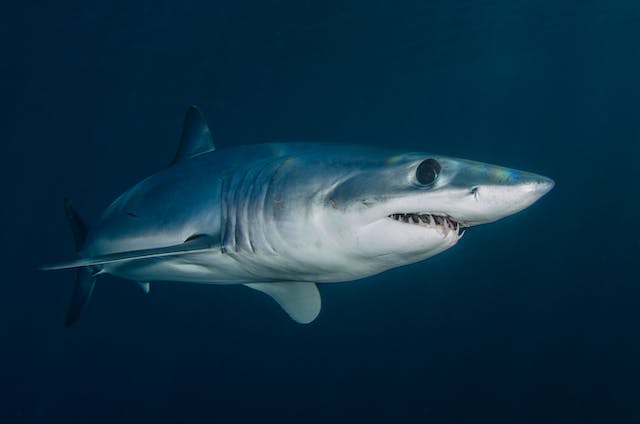
How do sharks sense electricity? With a special organ called the ampullae of Lorenzini. They are not the only sea life that are able to detect electricity.
All living creatures give off an electric field. All organisms use energy for a whole range of functions, which means we need to be able to generate it. We use electricity to send signals along our nervous system, to make our muscles contract, to think, and to do a whole host of other things. Without electricity in our bodies, we would not be alive. We have sodium, potassium, calcium, and magnesium in our bodies that we can use to create an electric charge. When we are at rest, the human body produces, on average, about 100 watts of power, which is enough to switch on a light bulb. When we are doing intense activity, such as when Usain Bolt is sprinting 100 m, he is probably producing over 2,000 watts of power. All of this electricity is created from inside the body. Because we are able to create electricity, we have an electric field around us. It is not very big, and we are not going to start electrocuting each other, but there is a detectable electric field.
All animals produce these electric fields. We are unable to see or sense them. We are limited to our five senses. However, a lot of animals can detect electric fields. Birds are a good example. They can detect the Earth’s magnetic field, which is how they are able to migrate so accurately. Many animals that live in the sea are also able to detect electric fields and sharks are a very good example. Fish produce even stronger magnetic fields than we do. They are a lot smaller than we are, mostly, but the mucus lining of their mouth is not shielded by skin, so the ions from it pass very easily into the ocean. Also, they are living in a saltwater environment and saltwater is an excellent conductor of electricity.
So, how do sharks detect electric fields? They have an organ called ampullae of Lorenzini. An ampullae is a Roman earthenware flask with a round body, a long neck, and two handles on either side. The ampullae of Lorenzini are shaped like these Roman flasks. They were discovered by Marcello Malpighi, but they were first described by Stefano Lorenzini in 1679, hence their name. The ampullae of Lorenzini are located in pores on the shark’s snout and around its mouth. Each ampullae is inside a pore, with the neck of the flask opening at the end of the pore and the bulb part inside the pore. The ampullae has nerve fibers inside a collagen case and is filled with a gel. The gel has the same electrical resistance as the seawater. The bottom of the ampullae has a receptor cell that is connected to a synapse and a nerve so that it can send a signal to the shark’s brain.
When there is an electric current near to the shark, the current gets transferred through the water and into the gel filled ampullae. The charge travels down the canal and reaches the receptor at the bottom. The charge causes a transmitter to be released and a signal is sent to the shark’s brain along the nerves. The shark can tell the size and the strength of the electrical field and where it is coming from. This is a useful skill to have because some sharks live at depths of 2,000 meters or more, where there is almost no sunlight. Sight isn’t a useful sense at that depth, so they rely on their sense of smell, and their ability to sense electricity. They can detect when a fish is nearby and they can sense where it is. They can also find fish that are hiding or not moving because even a still fish gives off electricity.
Sharks are not the only fish that have this ability. Stingrays, chimaeras, sturgeon, and some other fish also have the ability. Sharks use it for hunting, but many of these other fish use it for hiding. They can sense when a predator is nearby and they stop moving. Some stingrays have electroreceptors on their backs so that they can sense predators bearing down on them, even though they can’t see them. It is a very useful sense.
This ability to sense electric fields also helps sharks to migrate. In the same way as birds, sharks can probably sense the magnetic field of the Earth and they use it to direct themselves when they migrate long distances. And this is what I learned today.
Photo by Ben Phillips: https://www.pexels.com/photo/grey-shark-swimming-in-blue-waters-4781932/
Sources
https://www.graduate.umaryland.edu/gsa/gazette/February-2016/How-the-human-body-uses-electricity/
https://health.howstuffworks.com/human-body/systems/nervous-system/human-body-make-electricity.htm
https://asknature.org/strategy/the-sea-creatures-that-sense-electricity/
https://en.wikipedia.org/wiki/Ampullae_of_Lorenzini
https://www.americanscientist.org/article/the-discovery-of-the-sharks-electric-sense
